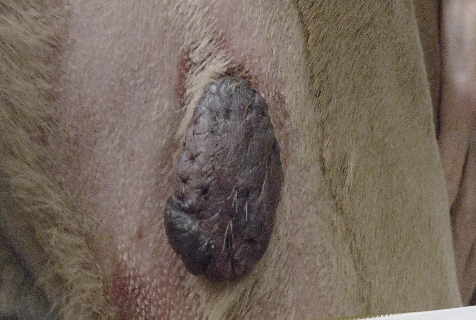Prevalence of Canine Mast Cell Tumours (MCTs)

Mast cell tumours (MCTs) account for up to 21% of cutaneous neoplasia in the dog1. They are highly variable in their appearance and behaviour and are widely known as ‘The Great Pretenders’.
MCTs typically occur in older dogs with the highest incidence between 7.5 to 9 years old. In fact, dogs over 10 years old are more than 40 times more likely to be diagnosed with a MCT versus a dog under 2 years of age!1,2 All breeds may be affected but certain breeds have been reported to be predisposed. The increasingly popular French Bulldogs, Pugs, Boxers, Golden Retrievers, Labrador Retrievers, and Staffordshire Bull Terriers feature frequently. It is estimated that nearly 0.3% of the U.K. canine population have a mast cell tumour1.
MCTs should be a differential for any cutaneous mass due to their variable nature and frequent presentation. Approximately 50% occur on the trunk where tumour access is good but many (up to 40%) will be found on the limb which may pose challenges for local treatment options3. Based on prevalence data and a large canine population of approximately 9 million dogs4 there is an estimated 24,300+ dogs with MCTs with market research showing that the average vet will see at least one MCT per month, with as many potentially missed5.
MCTs should always be on the differential list of those lumps and bumps that veterinary surgeons see every single day.
2. Śmiech, A., Łopuszyński, W., Ślaska, B., Bulak, K., & Jasik, A. Occurrence and Distribution of Canine Cutaneous Mast Cell Tumour Characteristics Among Predisposed Breeds. Journal of veterinary research, 2019; 63(1), 141–48
3. London CA and Thamm DH: Mast Cell Tumors. In Vail DM, Thamm DH and Liptak JM editors. Small Animal Clinical Oncology, ed 6, St Louis, 2020, Elsevier, pp 382-403.
4. PFMA https://www.pfma.org.uk/pet-population-2019
5. KG Marketsense UK& DE Market Assessment & EBC-46 Product Concept Test
